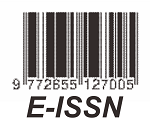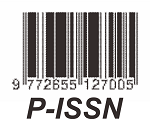EFEKTIVITAS MODEL PEMBELAJARAN INKUIRI TERBIMBING PADA PEMBELAJARAN FISIKA SISWA KELAS VII SMP IT ANNAJIYAH
DOI:
https://doi.org/10.46918/karst.v7i2.2529Keywords:
Keywords: learning outcomes, guided inquiry, physicsAbstract
The Effectiveness of the Guided Inquiry Learning Model in Physics Learning for Grade VII Students of SMP IT Annajiyah. This study explores the effectiveness of the guided inquiry model in teaching physics to seventh-grade students at SMP IT Annajiyah. It employs a qualitative approach with descriptive methods and a quasi-experimental design. The participants were students engaging in physics lessons using the guided inquiry approach. Data were collected through classroom observations to assess student participation, conceptual understanding, and responses to the learning process. The guided inquiry model was designed to actively involve students in exploration, investigation, and problem-solving under teacher guidance. The findings indicate that this approach enhances students' interest, participation, and engagement in learning activities. Thus, the guided inquiry model is an effective method for teaching physics at the middle school level.
References
Arikunto, S. (2010). Prosedur penelitian suatu pendekatan praktik. Jakarta: Rineka Cipta.
Bell, T., Urhahne, D., Schanze, S., & Ploetzner, R. (2010). Collaborative inquiry learning: Models, tools, and challenges. International Journal of Science Education, 32(3), 349-377.
Darmawan, D. (2013). Metode penelitian kuantitatif. Bandung: Remaja Rosdakarya.
Daryanto. (2010). Belajar dan mengajar. Bandung: Yrama Widya.
Depdiknas. (2003). Standar kompetensi mata pelajaran fisika SMA dan MA. Jakarta: Pusat Kurikulum, Badan Penelitian dan Pengembangan.
Dimyati, & Mudjiono. (2015). Belajar dan pembelajaran. Jakarta: Rineka Cipta.
Falahudin, I., Wigati, I., & Astuti, A. P. (2016). Pengaruh model pembelajaran inkuiri terbimbing terhadap kemampuan berpikir kritis siswa pada pembelajaran materi pengelolaan lingkungan di SMP Negeri 2 Tanjung Lago, Kabupaten Banyuasin. Bioilmi: Jurnal Pendidikan, 2(2), 92–101.
Fatimah, L. U., & Khoiruddin, A. (2019). Analisis kesukaran soal, daya pembeda dan fungsi distraktor. Jurnal Pendidikan dan Evaluasi Pendidikan, 8(1), 1–14.
Gumay, O. P. U., Heidi, N., & Amin, A. (2018). Efektivitas Model Pembelajaran Quantum Teaching terhadap Hasil Belajar Fisika. Science and Physics Education Journal (SPEJ), 2(1), 36–41. https://doi.org/10.31539/spej.v2i1.465
Istarani. (2019). 58 Model Pembelajaran Inovatif?; Model, Metode, Strategi, Teknik. Medan?: Media Persada.
Kirschner, P. A., Sweller, J., & Clark, R. E. (2006). Why minimal guidance during instruction does not work: An analysis of the failure of constructivist, discovery, problem-based, experiential, and inquiry-based teaching. Educational Psychologist, 41(2), 75-86.
Nur’Azizah, H., Jayadinata, A. K., & Gusrayani, D. (2016). Pengaruh Model Pembelajaran Inkuiri Terbimbing Terhadap Kemampuan Berpikir Kritis Siswa Pada Materi Energi Bunyi. Jurnal Pena Ilmiah UPI, 1(1), 51–60.
Syahfitri, M. M. (2008). Analisa Unsur Hara Fosfor (P) pada Daun Kelapa Sawit Secara Spektrofotometri di Pusat Penelitian Kelapa Sawit (PPKS) Medan. Universitas Sumatera Utara.
Downloads
Published
Issue
Section
License
Karst : Jurnal Pendidikan Fisika dan Terapannya, adalah Jurnal Akses Terbuka (Open Access Journal). Penulis yang menerbitkan artikelnya dalam jurnal ini setuju dengan ketentuan berikut:

This work is licensed under a Creative Commons Attribution-ShareAlike 4.0 International License.
You are free to:
- Share — copy and redistribute the material in any medium or format
- Adapt — remix, transform, and build upon the material for any purpose, even commercially.
- Attribution — You must give appropriate credit, provide a link to the license, and indicate if changes were made. You may do so in any reasonable manner, but not in any way that suggests the licensor endorses you or your use.
- ShareAlike — If you remix, transform, or build upon the material, you must distribute your contributions under the same license as the original.
- No additional restrictions — You may not apply legal terms or technological measures that legally restrict others from doing anything the license permits.








94.jpg)

















